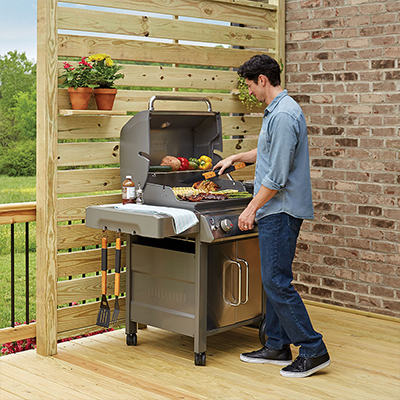How to Grill a Steak
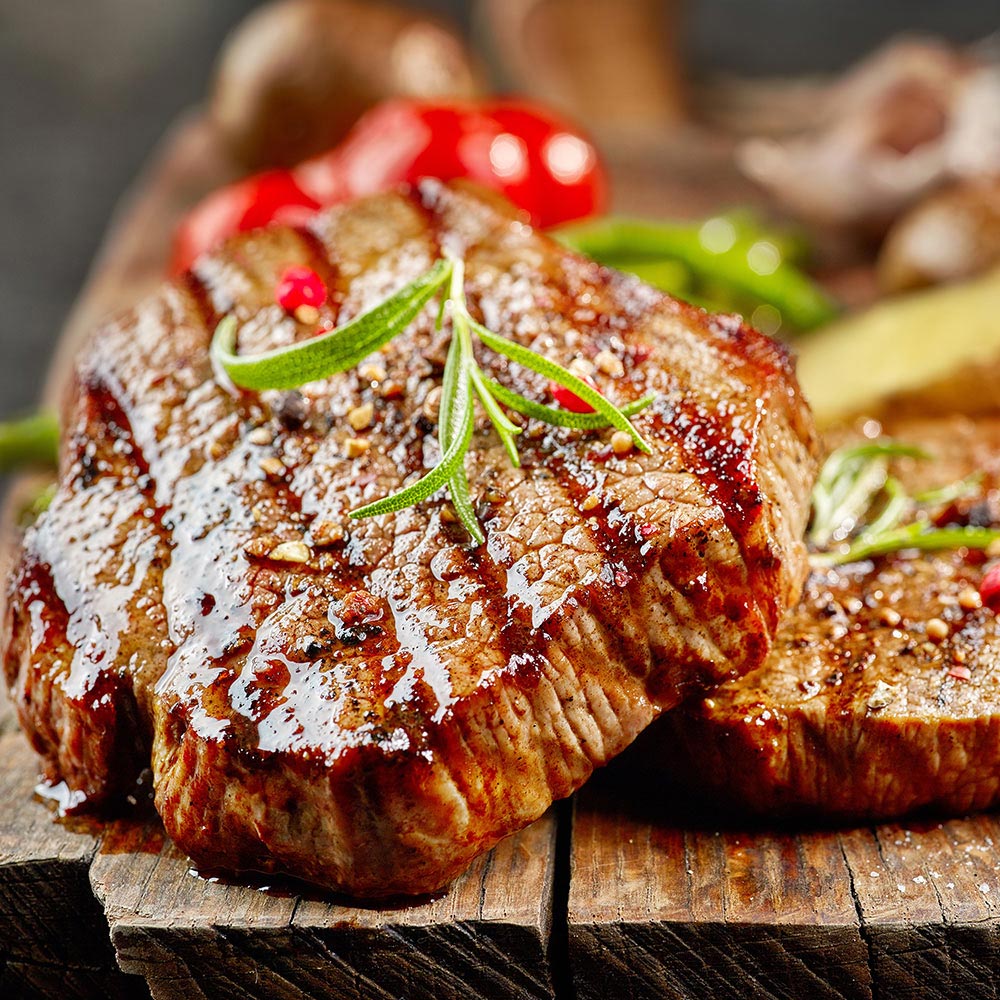
Last updated September 7, 2023
Learn how to grill a steak that is perfectly cooked. With a beautiful char on the outside and a tender, juicy middle, grilling a steak is not just for special occasions. This is a skill you will use for every cookout.
This guide will teach you about different cuts of meat, how to grill a steak on a gas grill or charcoal grill
and offer tips for grilling temperature for steak and the level of doneness.
Difficulty:
Beginner
Duration:
Under 2 hours
Table of Contents
Select the Steak
Prep the Steak
Prep the Grill
Cook the Steak
Grilling Temperature for Steak
Let Steak Rest
Select the Steak
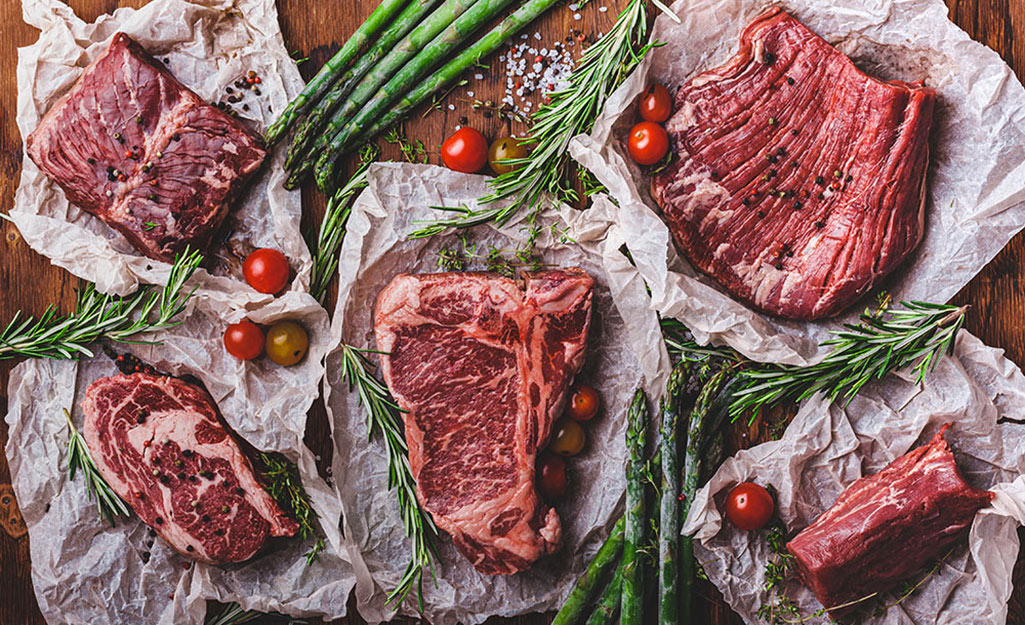
Selecting quality meat is a crucial part of how to cook steak on a grill. Look for cuts that are well-marbled with little pockets of fat between muscle tissue. Marbling makes a tender and flavorful steak.
Get these thicker cuts from the butcher, where you can request steaks that are 1 1/2-inches to 2-inches thick for maximum juiciness.
- Ribeye: A ribeye is a very well-marbled cut that is full of beefy flavor. When you grill a steak with a high fat content, such as a ribeye, be sure to trim extra fat from the edges to reduce flare-ups from the hot coals.
- Strip Steak: Whether you call it top sirloin, New York Strip or Kansas City Strip, this tender steak is full of marbling. It usually doesn’t need much trimming, making it easy to grill without flare-ups.
- T-bone: This steak is named for the T-shaped bone that separates two cuts – the tenderloin and the richer, chewier strip steak. The tenderloin side cooks faster, so be sure to position it farther away from the hot coals and the strip side closer to the direct heat.
These thinner cuts are known for plenty of beefy flavor and a pleasant chewy texture and can often be found pre-packaged in the supermarket.
- Flank: The flank steak is rich in flavor. Always serve flank steak sliced against the grain to maximize tenderness.
- Hanger: Hanger has a strong beefy flavor and is especially good for marinating. Its looser muscle fibers will soak in flavor.
- Skirt: The skirt steak is a very thin cut with plenty of fat and does very well with high-heat searing. It is important to slice skirt steak against the grain for tenderness.
Tip: The USDA evaluates beef and assigns a grade based on quality. Prime grade, with its abundant marbling, is primarily found in restaurants. Choice grade beef is high quality but has less marbling than prime. Select grade is normally leaner beef. It may lack the juiciness and flavor found in higher grades.
Prep the Steak
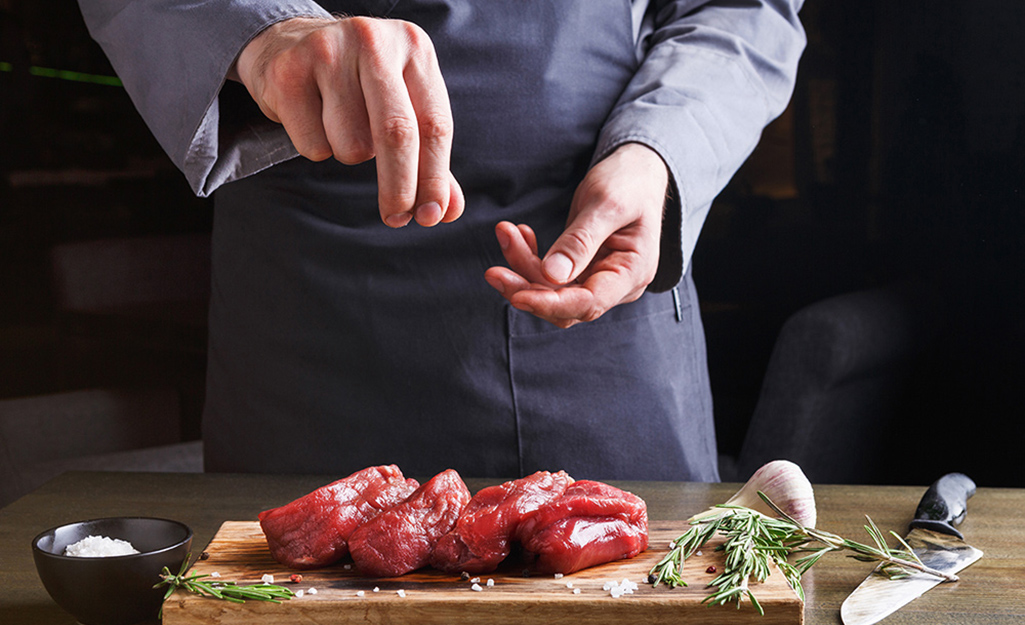
- Excess fat should be trimmed to reduce flare-ups. Leave 1/4-inch for flavor.
- Sprinkle 1/2-teaspoon coarse salt per pound on both sides of the steak and return the steak to the refrigerator for an hour or two. The salt will be sucked into the meat and act as a brine to help keep it juicy and flavorful.
- Remove the steak from the refrigerator 30 minutes before putting it onto the grill so that it comes to room temperature.
- Just before grilling a steak, use a paper towel to pat it dry and then season with salt and pepper.
Prep the Grill

It’s the heat that matters most with how to grill a steak, whether you use charcoal grills or gas grills. With either, use two zones – one side of the grill for direct heat and the other for indirect heat.
- Before grilling the steak, clean the grill grates. Then, preheat the grill. The temperature should be very hot – between 450 and 500 degrees Fahrenheit – when you grill a steak. Brush the clean grill grates with oil before placing any food on it.
- If using a charcoal grill, start your charcoal grill 10 to 15 minutes before you begin cooking. When the coals are ready to grill a steak, use a long-handled spatula or tongs to spread them over half of the lower grate. Place the upper grate on top and allow it to heat up with all of the vents open.
- If using a gas grill, use burners only on one side of the grill. Preheat to high. Best temperature for grilling steaks is between 450 and 500 degrees Fahrenheit.
Cook the Steak
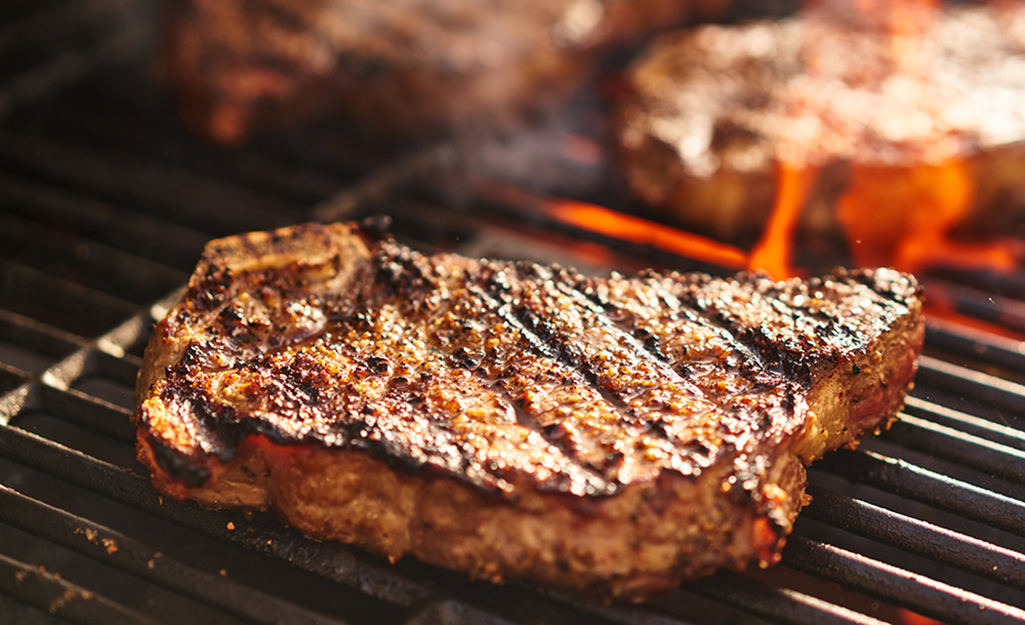
For cuts less than 1 1/2-inch thick:
- Grill a steak over the hottest part of the grate over direct heat if it is a thinner cut.
- Keep the lid closed while cooking to prevent flare-ups.
- Flip the meat with tongs about every minute to promote even cooking and browning as you grill a steak.
- Remove it from the fire once the desired doneness is reached. Read more about steak temperature below.
- Let the steak rest for five minutes before cutting.
For steaks thicker than 1 1/2-inch:
- Use the reverse-sear method for grilling a steak if the cut is thicker than 1 1/2-inch. With this steak grilling technique, you use indirect heat to cook the steak until it’s almost reached the desired doneness, then finish it with a quick sear over the direct heat.
- Position the steak on the grill away from the coals.
- Close the lid to prevent flare-ups.
- Start checking the steak temperature after about 15 minutes over indirect heat.
- Recheck every few minutes until the temperature reaches 10-15 degrees below the desired doneness temperature.
- Use tongs to remove the steak from the grill.
- If using a gas grill, close the lid and turn up the heat on all burners.
- On a charcoal grill, gather the hot coals into a pile or add a half-chimney of lit coals to the lower grate.
- When the heat has intensified, place the steak directly over the heat and turn every minute to get even browning.
- Remove the steak when the desired temperature is reached.
- Let the steak rest for five minutes before cutting.
Tip: Electric grills often lack the intense heat associated with gas, traditional charcoal and popular Kamado grills. If using the electric variety to grill a steak, allow for more cooking time, choose thinner cuts and rotate the steak clockwise frequently as it cooks so that more of its surface comes in contact with the heated ridges of the grill.
Grilling Temperature for Steak
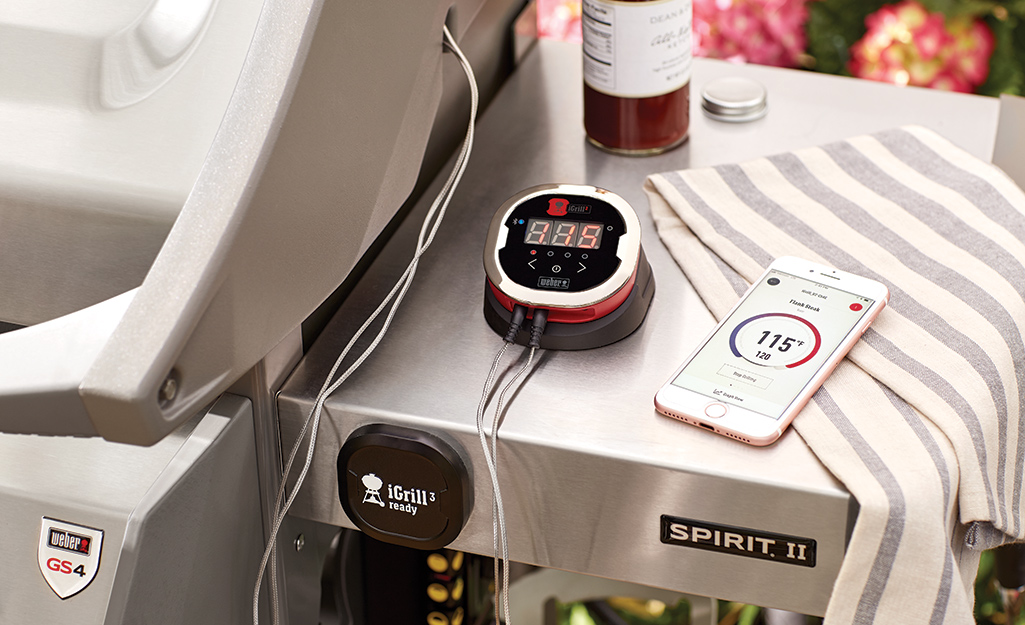
Use an instant-read thermometer to check the steak temperature while it’s still on the grill. It will increase another 5 degrees as the steak rests.
When you know the grilling temperatures for steak, you will deliver the right level of doneness to your guests. These are guidelines for internal temperature and characteristics of doneness before resting:
- Rare: 125 to 130 degrees Fahrenheit. Seared on the outside, slightly cool and bright red inside.
- Medium-rare: 130 to 140 degrees Fahrenheit. Seared on the outside, firmer than rare but still red.
- Medium: 140 to 150 degrees Fahrenheit. Firm center with a pink color.
- Medium-well: 150 to 160 degrees Fahrenheit. Small amount of pink in center.
- Well Done: 160 degrees Fahrenheit and above. Firm center with no pink.
Note: The USDA recommends a safe internal temperature of 145 degrees Fahrenheit and a rest time of at least three minutes for a beef steak.
Let Steak Rest
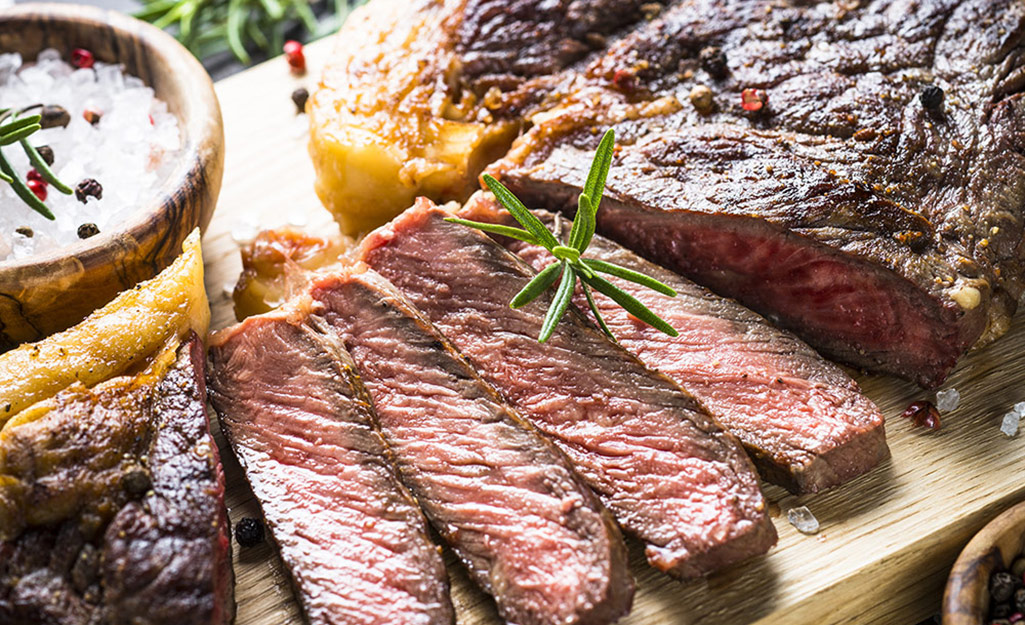
Place the meat on a plate or cutting board. You can loosely cover the grilled steak with aluminum foil. Let the meat rest for three to five minutes to allow juices to settle before cutting.
Tip: Aluminum foil can help the grilled steak retain heat on cold, windy days, but it's optional. Additionally, manufacturers recommend against using foil to line the inside of a grill or a grate. You can use foil to grill packet meals with vegetables and protein.
Prepare your heat, prepare your meat and you'll find grilling the perfect steak to be a delicious new skill you can enjoy the whole summer and beyond. Looking for grill tools and accessories? The Home Depot delivers
online orders
when and where you need them.
